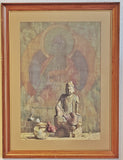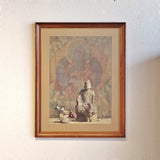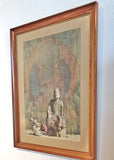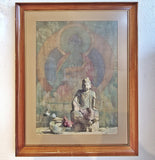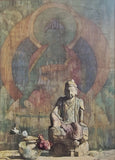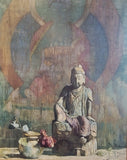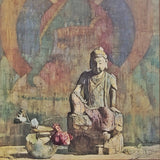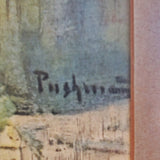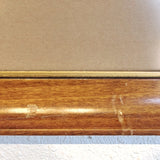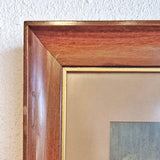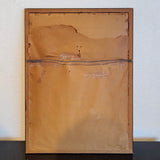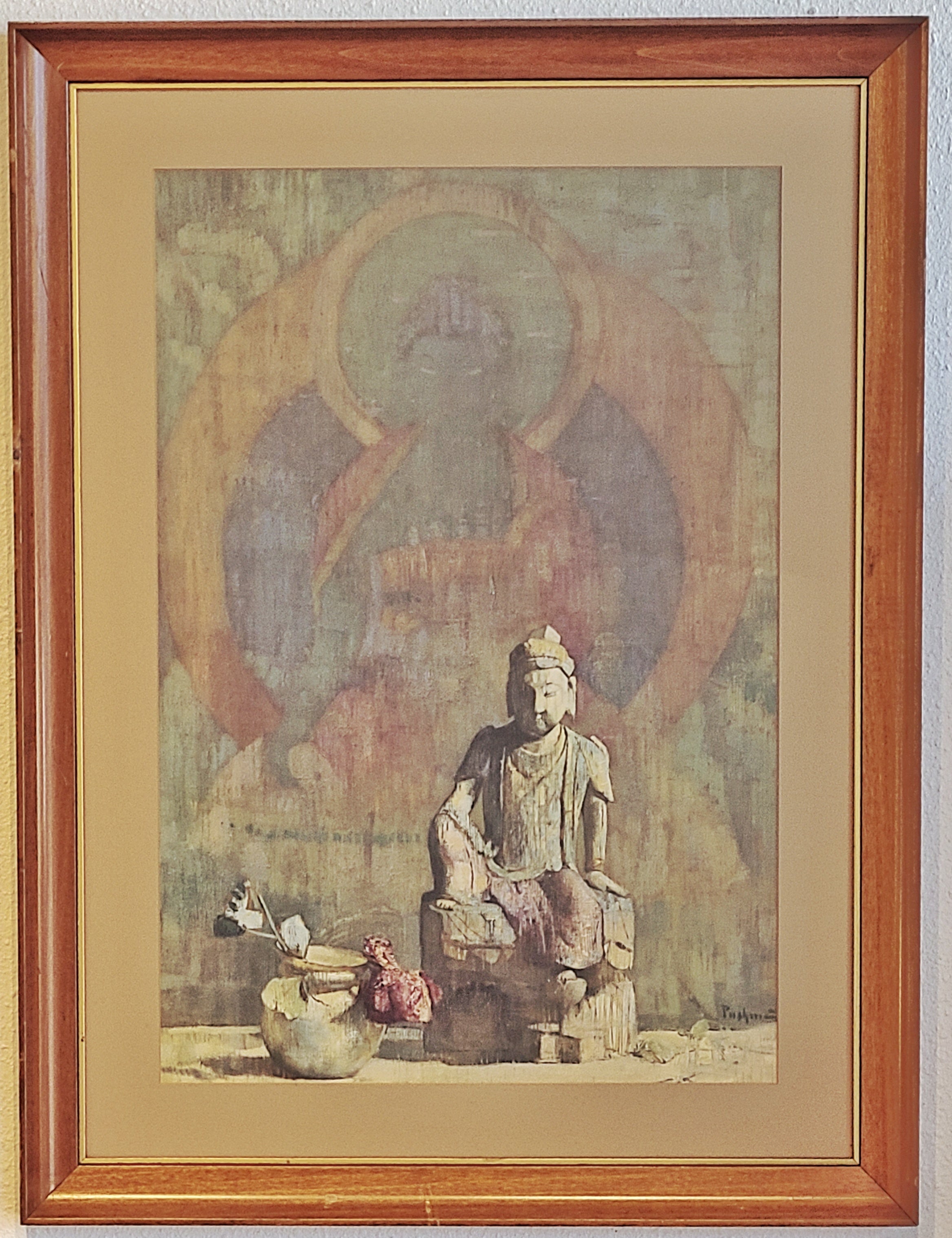
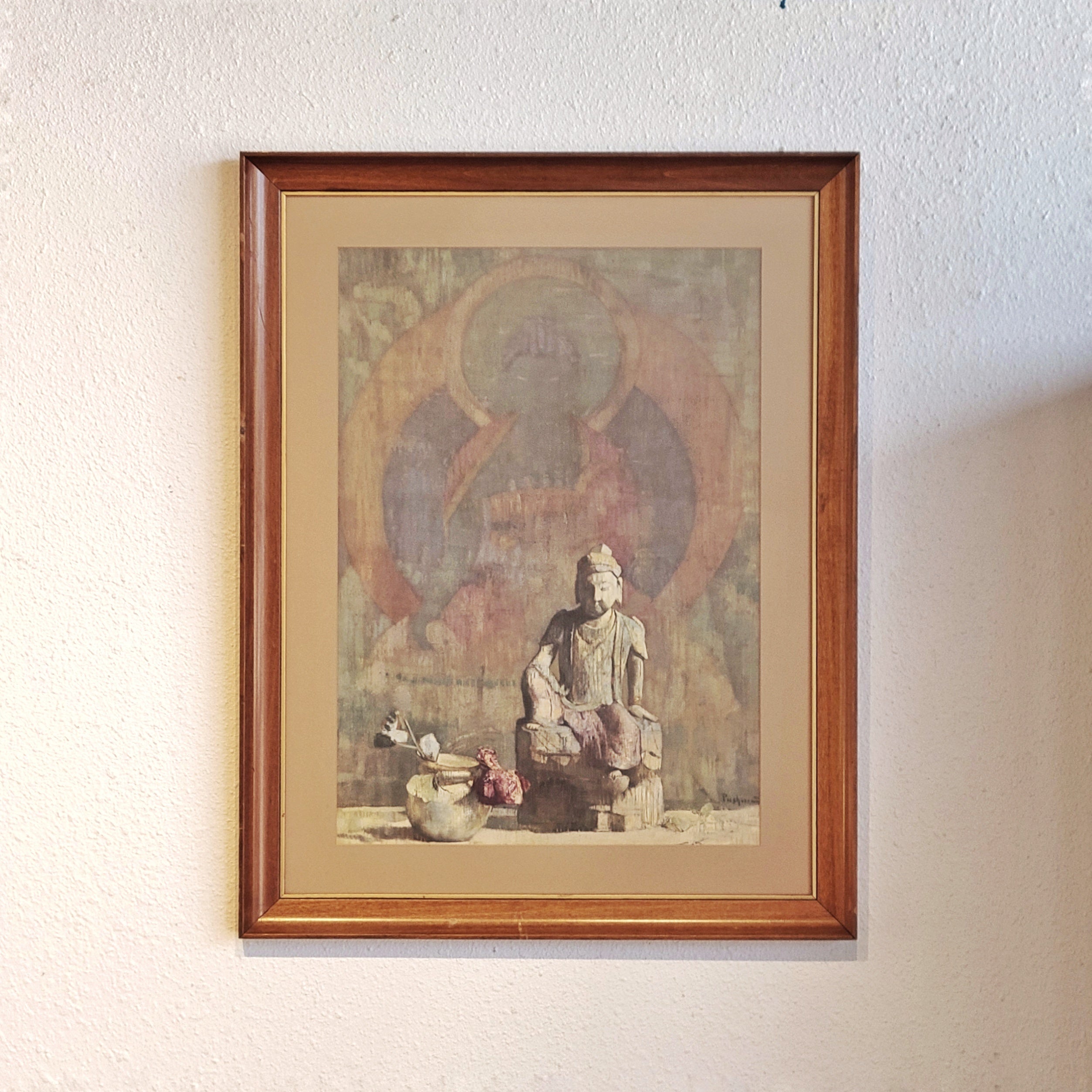
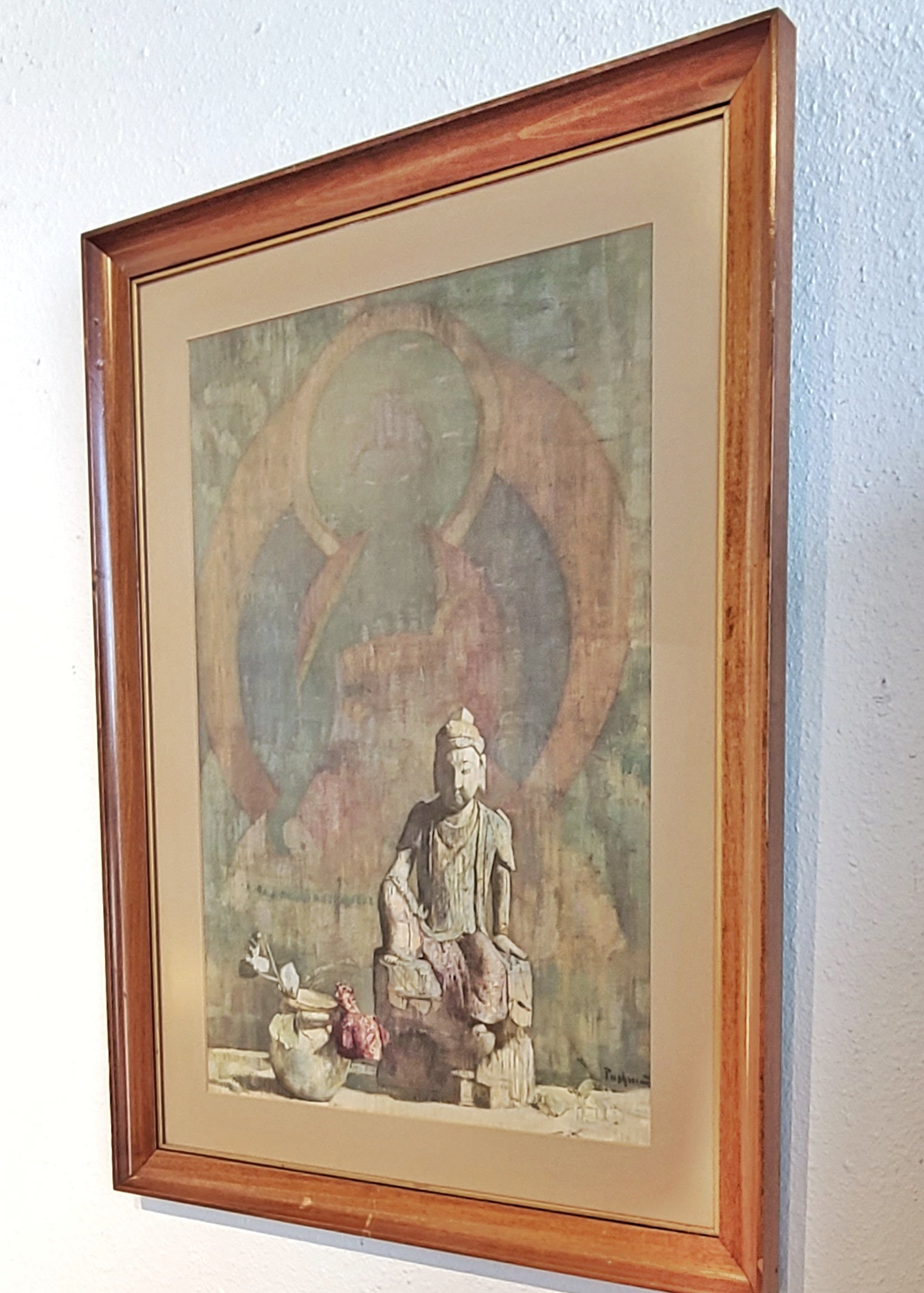
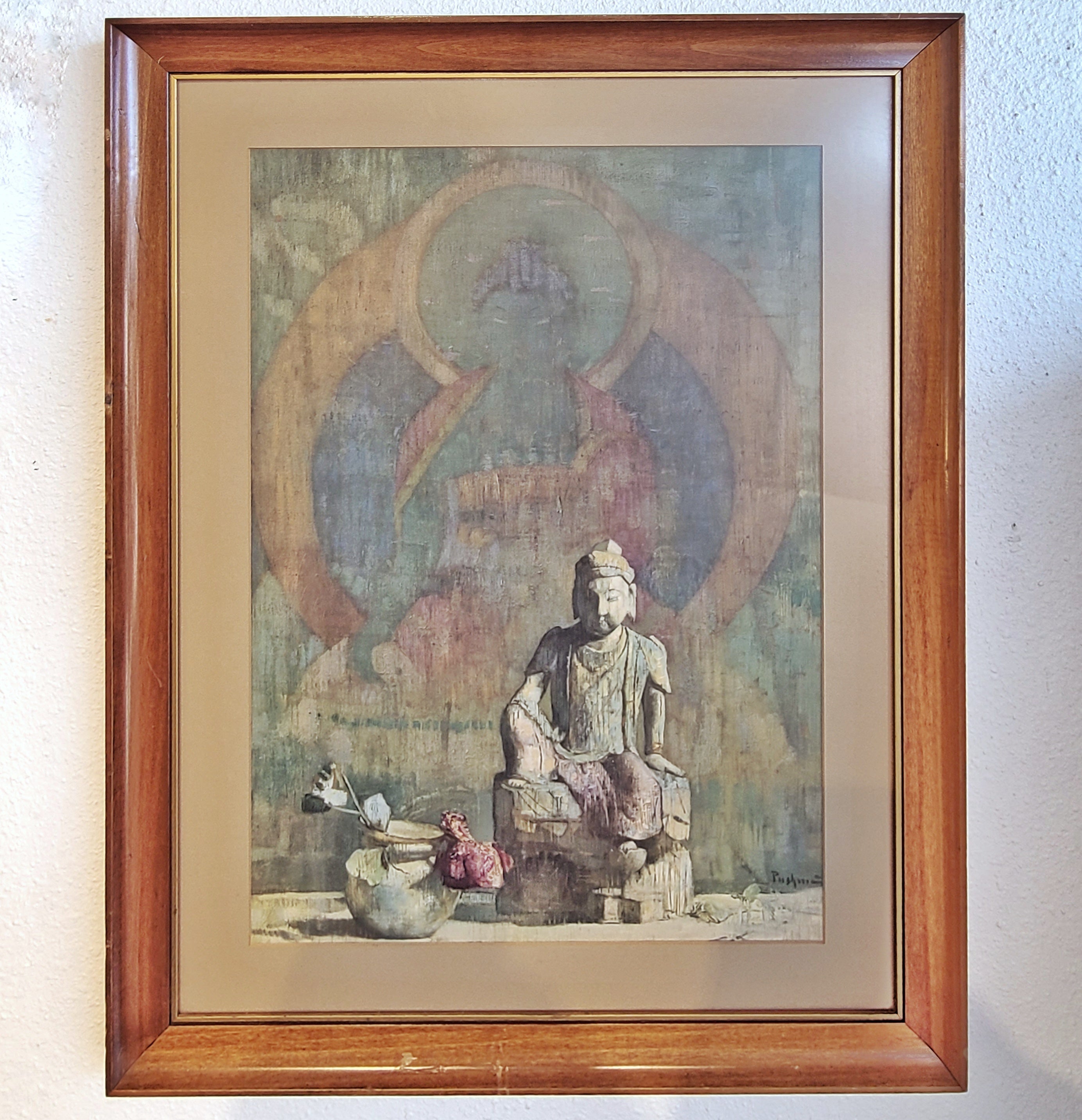
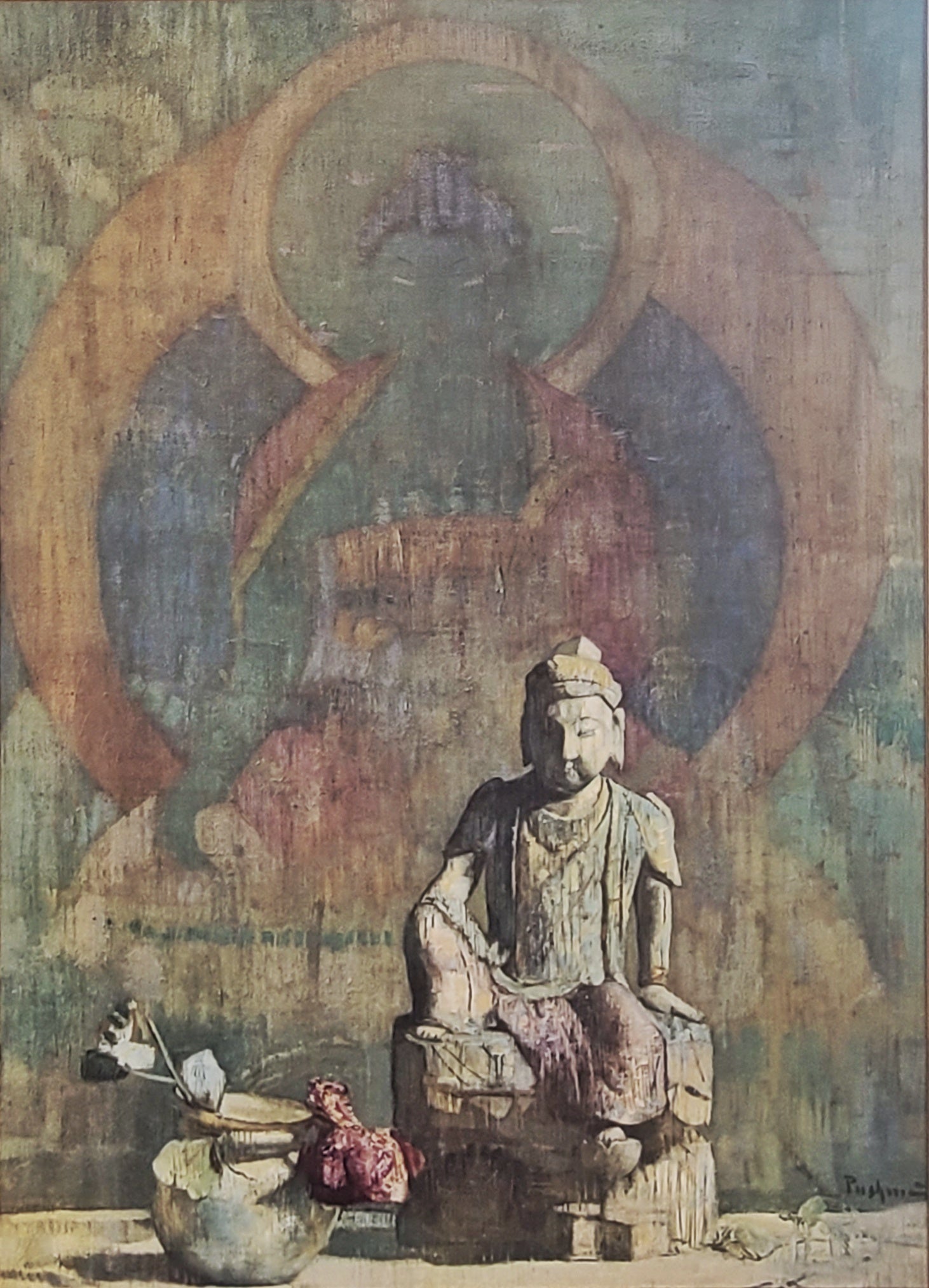
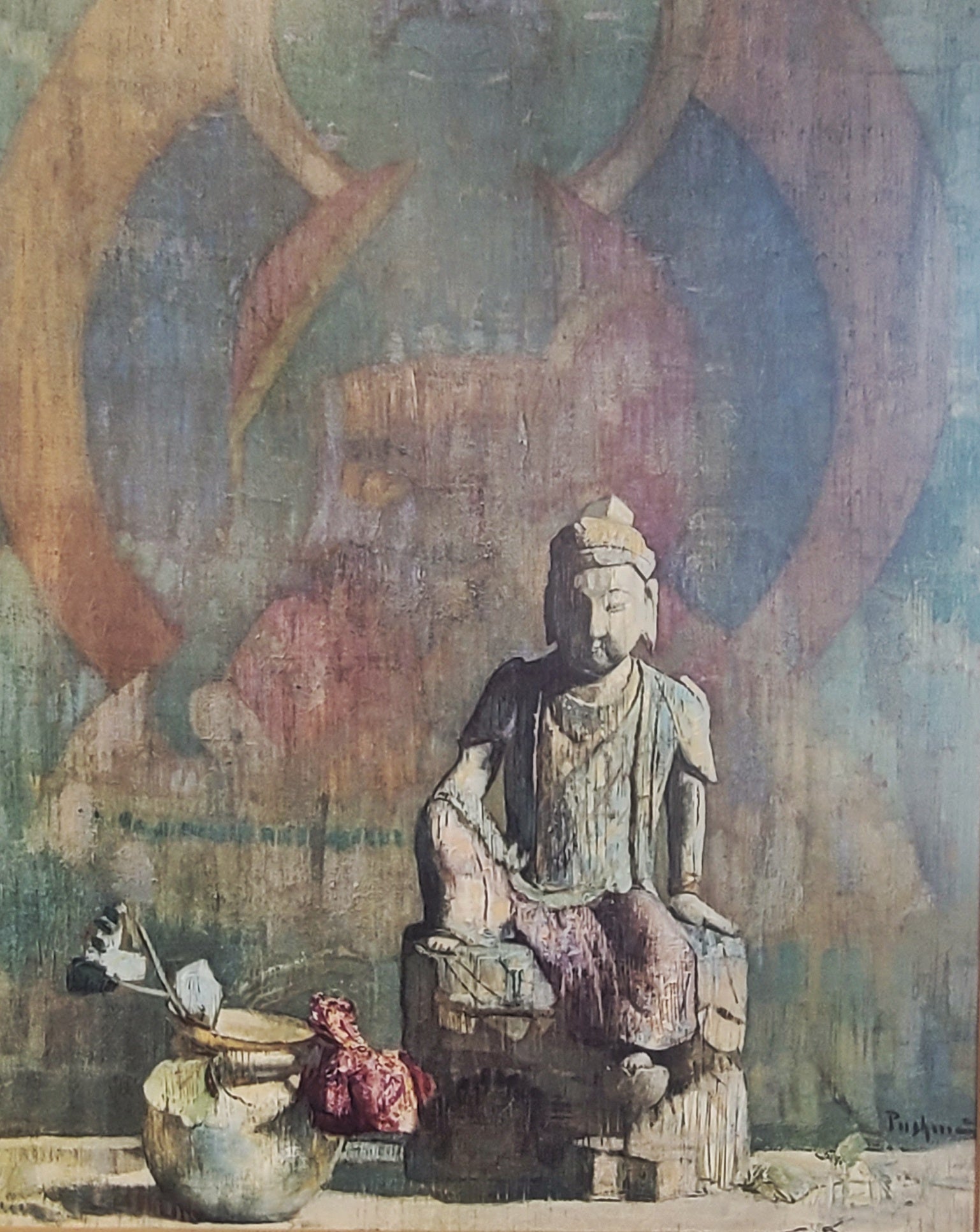
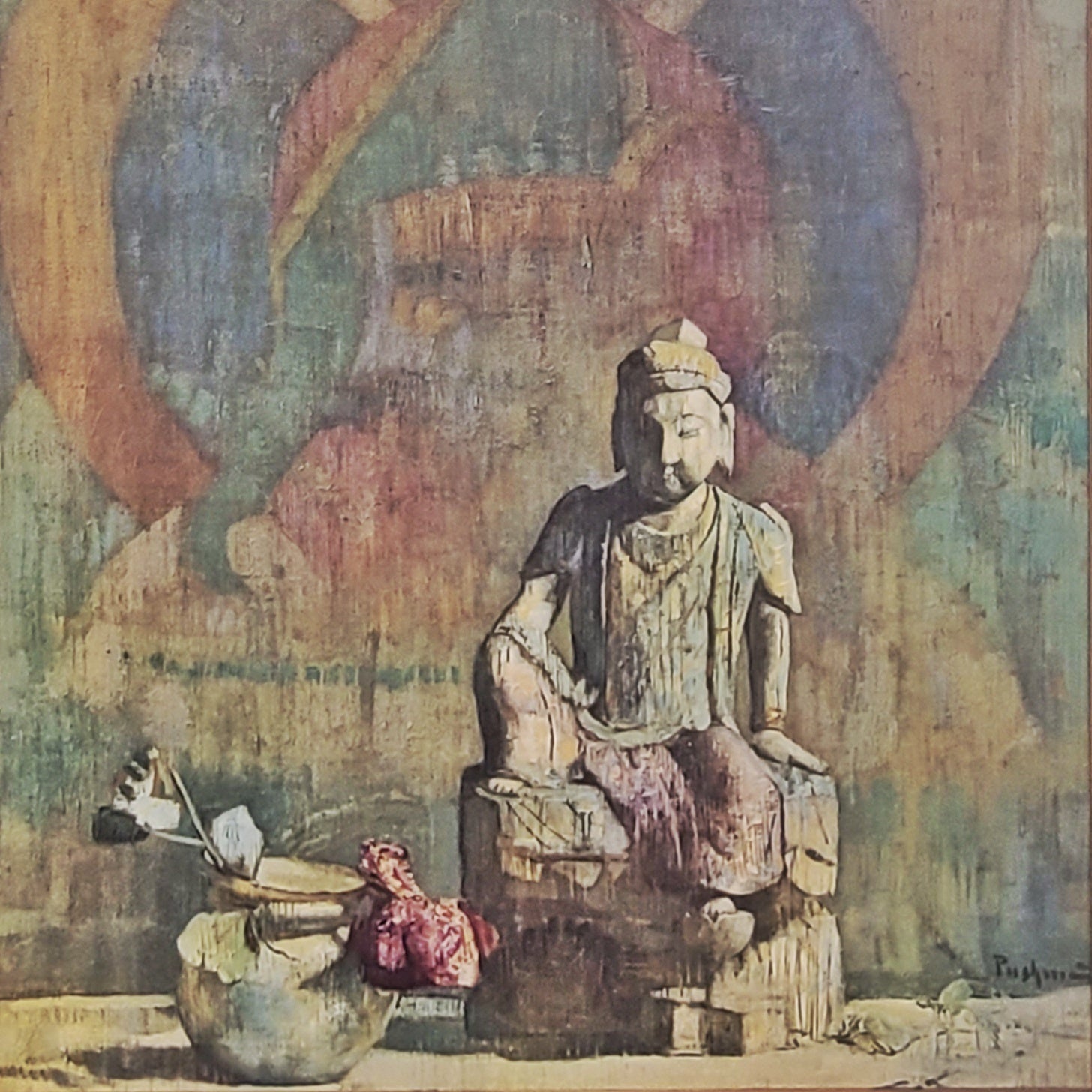
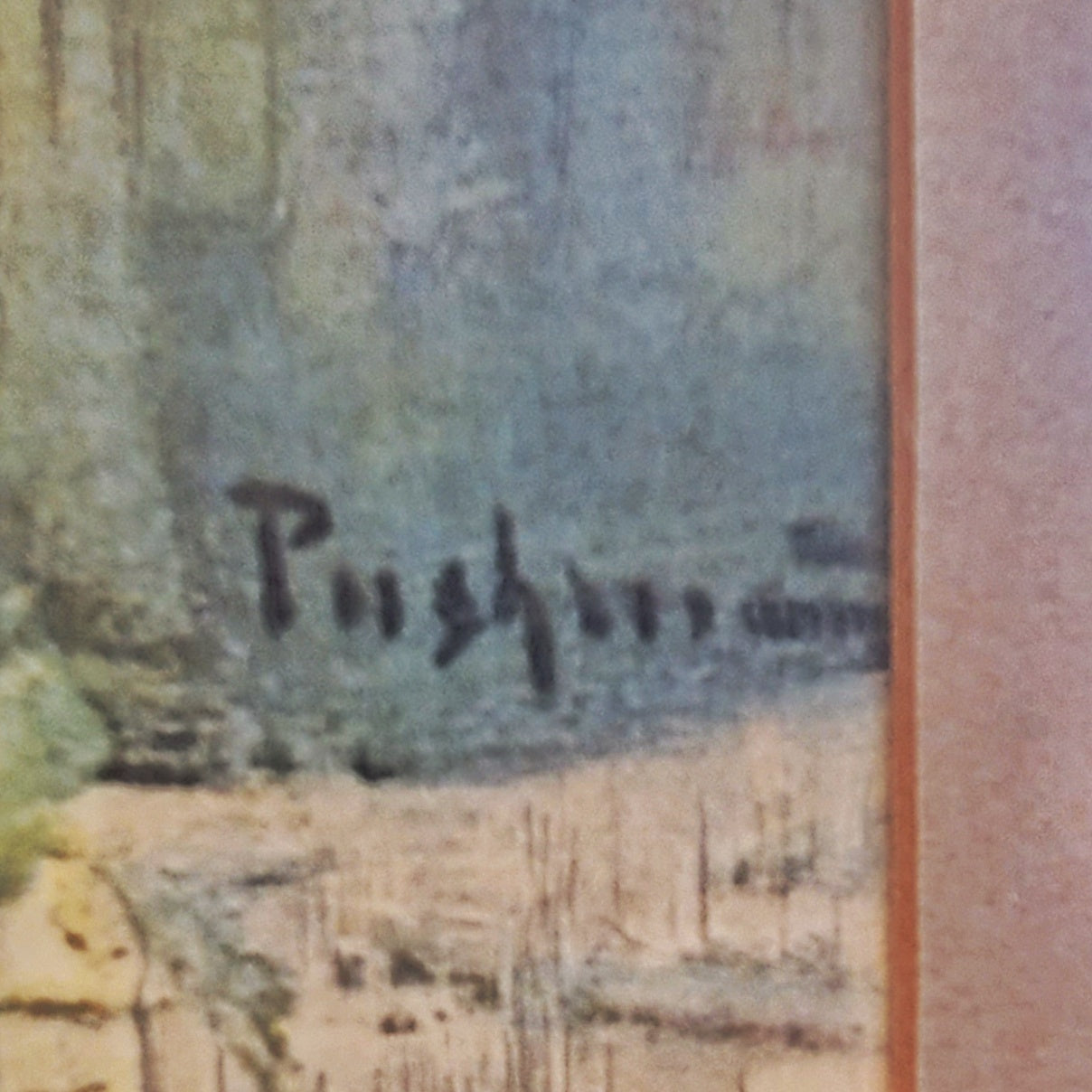
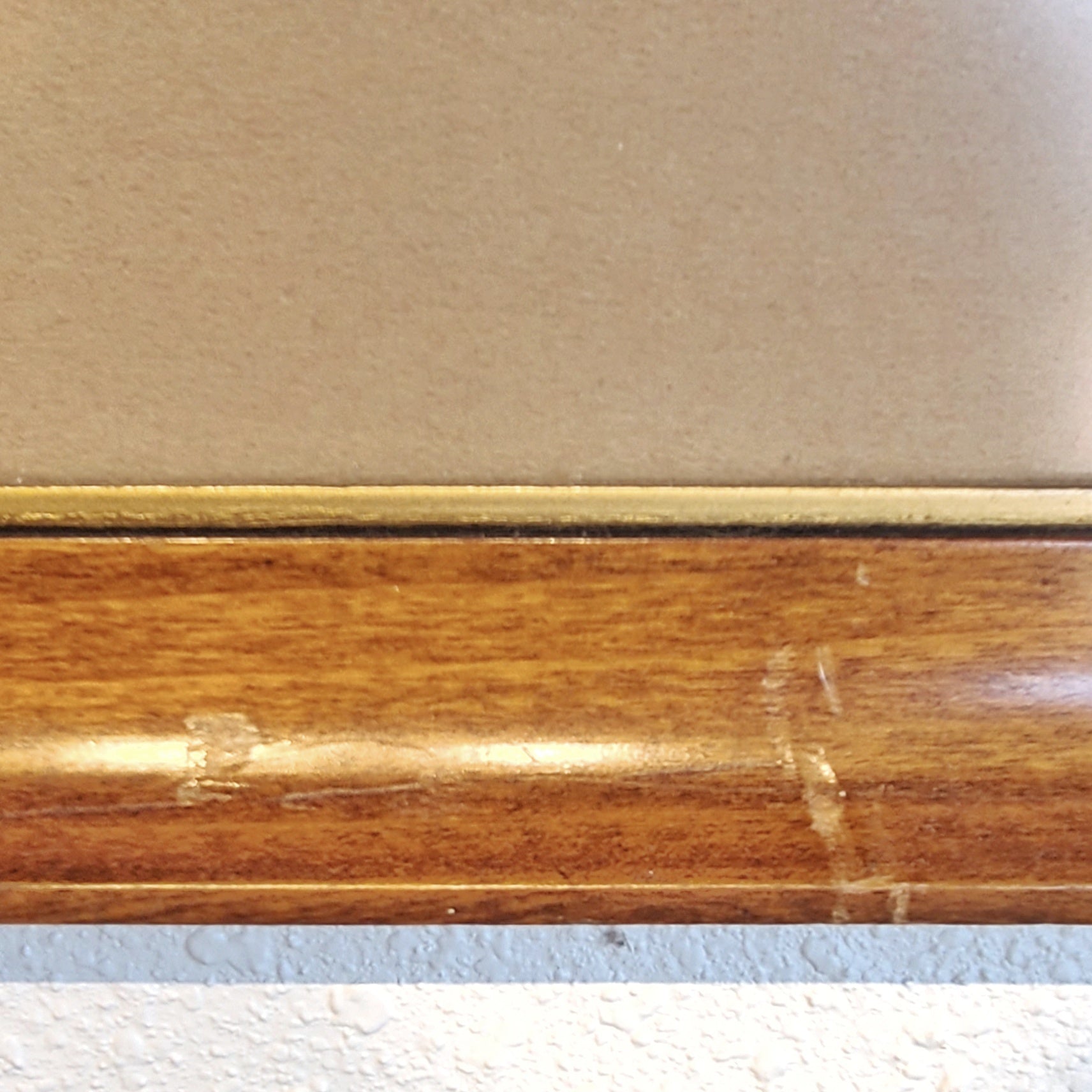
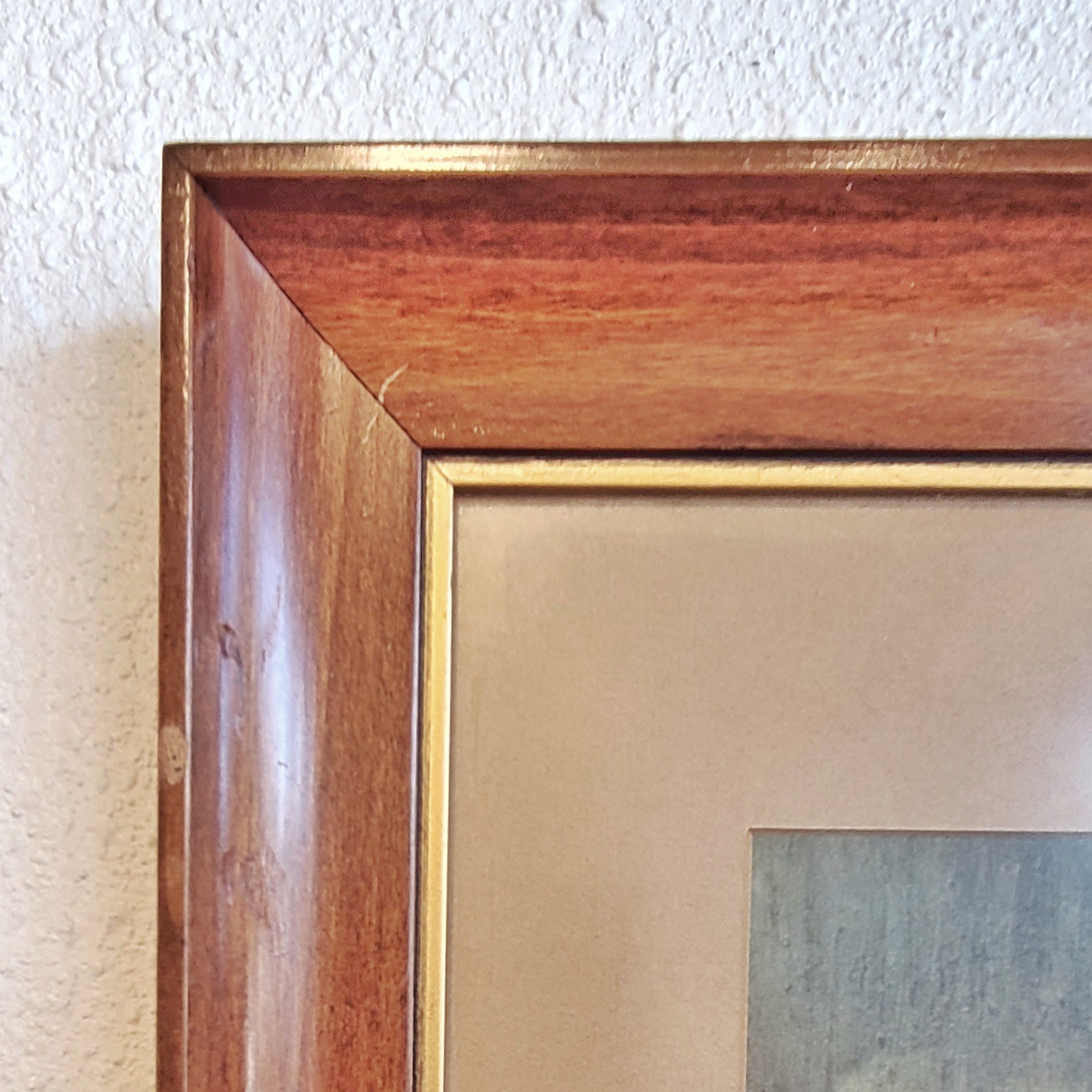
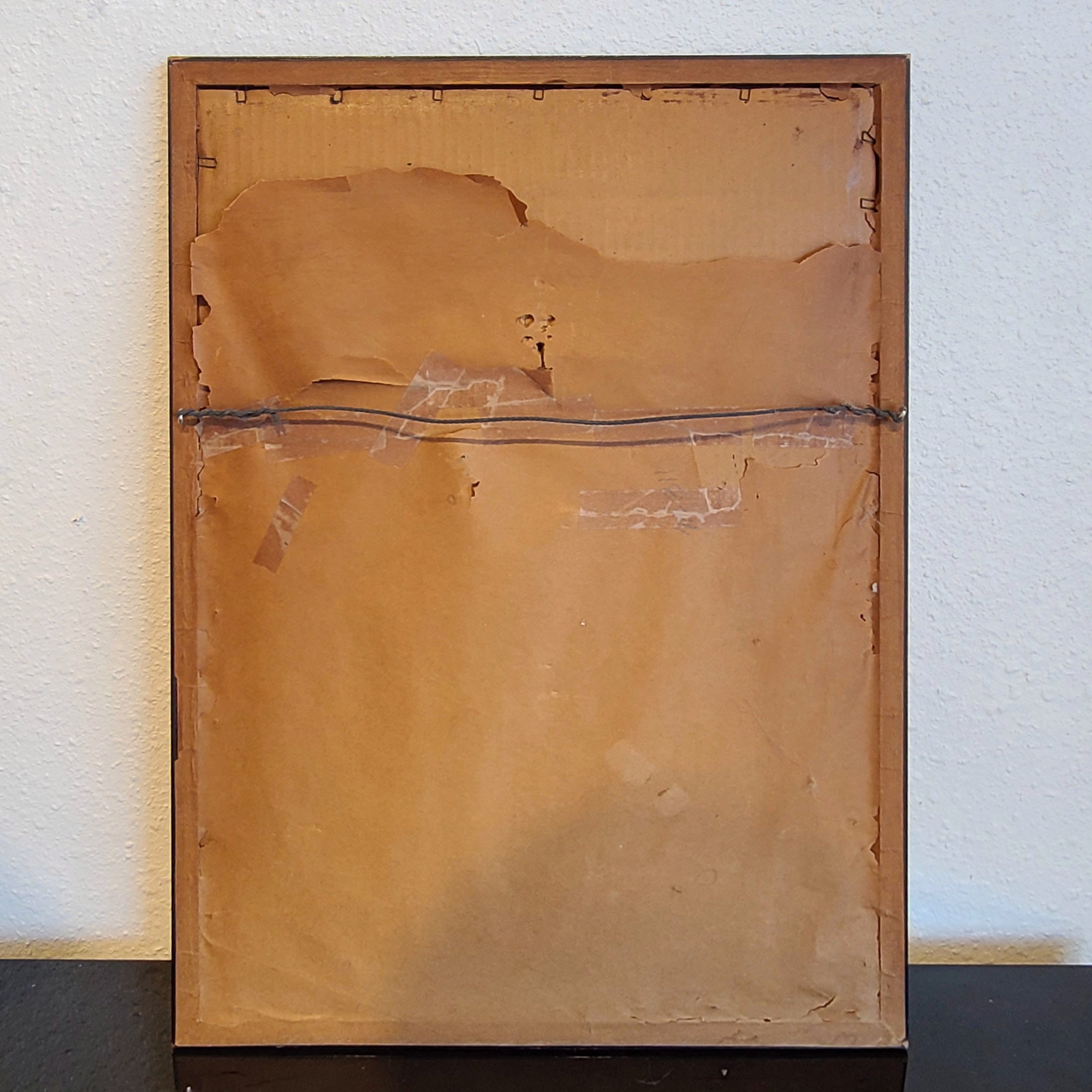
‘WHEN AUTUMN IS HERE’ BY HOVSEP PUSHMAN (1930)
CONTACT US HERE ABOUT THIS ITEM.
A framed offset lithograph after a still life by Armenian-American artist HOVSEP PUSHMAN (1877–1966). A small vessel holding a wilting rose is depicted alongside a Chinese figurine against the backdrop of a religious mural. The differently shaped and sized objects are balanced within an open-air atmosphere, cultivating an ideal of beauty in impressionistic color. Much here is typical of Pushman’s work: Oriental mysticism, the suggestion of allegory, and an aura of nocturnal intimacy. The signature is printed in plate at the bottom right.
Incidental to its artistic merits, the original played an important role in US copyright law. Upon its completion, Pushman turned it over to Grand Central Art Galleries to broker a sale—without negotiating further reproduction rights. It was sold to the University of Illinois; the school in turn sold said rights to the New York Graphic Society. Pushman sued for an injunction in 1940. The controversial dispute would eventually—some ten years after his death—be ruled in Pushman’s favor. Section 202 of the Copyright Act of 1976 expressly rejected the “Pushman presumption,” which had held that when the only tangible embodiment of a work is transferred, common-law copyright is transferred concurrently.
HOVSEP PUSHMAN was an Armenian-born American painter, best known for mystical still-lifes and his sensitive portraiture of women, often in exotic dress. The subject matter of the former typically involves meticulous arrangements of oriental figurines and ornate pottery, often set against centuries-old embroidered silk backdrops. Pushman’s oeuvre is a major contribution to the history of American art and represents a significant achievement in the history of the still-life genre.
Pushman (originally “Pushmanian”) was born in 1877 in the town of Dikranagerd (Diyarbakir in modern Turkish) in Anatolia, aka Asia Minor, in the part of Armenia then known as Turkish Ermenistan, where his family was in the carpet business. At 11 years of age, Pushman became the youngest student ever to be admitted to the Imperial School of Fine Arts in Constantinople. The continual political persecution suffered by the Armenians under the Turkish Sultan Abdul Hamed forced the Pushman family to leave for the US in 1896. They settled in Chicago and became US citizens. Pushman entered classes at the Smith Academy, where, at the unprecedented age of 17, he began to teach. In 1910, he decided to continue his art education in Paris at the Académie Julian under the tutelage of Jules Joseph Lefebvre (1836–1911). He was awarded the Bronze Medal for painting at the Paris Salon of 1914.
The first important US exhibitions of Pushman’s works were held at the Milwaukee Art Institute in 1915 and the Art Institute of Chicago in 1916. Pushman settled briefly in Riverside, Calif., in 1918 where he and a group of fellow painters formed the Laguna Beach Art Association; that same year he was awarded the California Art Club’s Ackerman Prize. After his return to Paris, he resumed his association with the Salon des Artistes Francais and won the Gold Medal for painting at its 1921 exhibition. He would maintain a studio in Paris for the rest of his life.
Pushman returned to the US in 1921 and opened a New York City studio in the Carnegie Hall Building on 7th Avenue. It was here that his artistic identity began to fully take shape. His later career would be largely devoted to one subject, oriental mysticism—and to one form, the still life. At the urging of Erwin S. Barrie, its director, Pushman joined Grand Central Art Galleries as a member artist. The 1932 exhibition of his paintings and prints there created a sensation. All 16 of his works were sold on opening day. This phenomenon was followed by critical acclaim and public approval. He continued to exhibit at the Galleries for the rest of his life—first at their original location on the 6th floor of Grand Central, and, following their 1958 relocation, on the 2nd floor of the Biltmore Hotel.
Today, Pushman’s works are in the collections of the Metropolitan Museum of Art in New York, the Museum of Fine Arts in Boston, the Seattle Art Museum, the San Diego Museum of Art, the Houston Art Museum, and the National Gallery of Armenia in Yerevan, among others. Pushman continued to paint in his New York studio until a few months before he died in 1966.
There is an abiding hush in this canvas, the intense stirring stillness of remembered music. – HOVSEP PUSHMAN, on one of his compositions
A portrait of Pushman’s niece, Dora, at the age of fourteen, dressed in traditional Armenian costume, was presented to Woodrow Wilson in thanks for his efforts to aid the Armenian people during WWI. Still on display to the public today, L’Esperance now hangs in the Woodrow Wilson House in D.C., the converted private Washington home where Wilson moved after leaving office.
DETAILS
Artist – HOVSEP PUSHMAN (1877–1966)
Period/Year – 1950s
Origin – USA
Styles/Movements – ASIAN; IMPRESSIONIST
Media – LITHOGRAPH
Colors – TEAL; BRONZE; ALABASTER
Condition – Excellent vintage condition. Minor wear consistent with age and use.
Dimensions – 29" H × 22" W × 1" D

